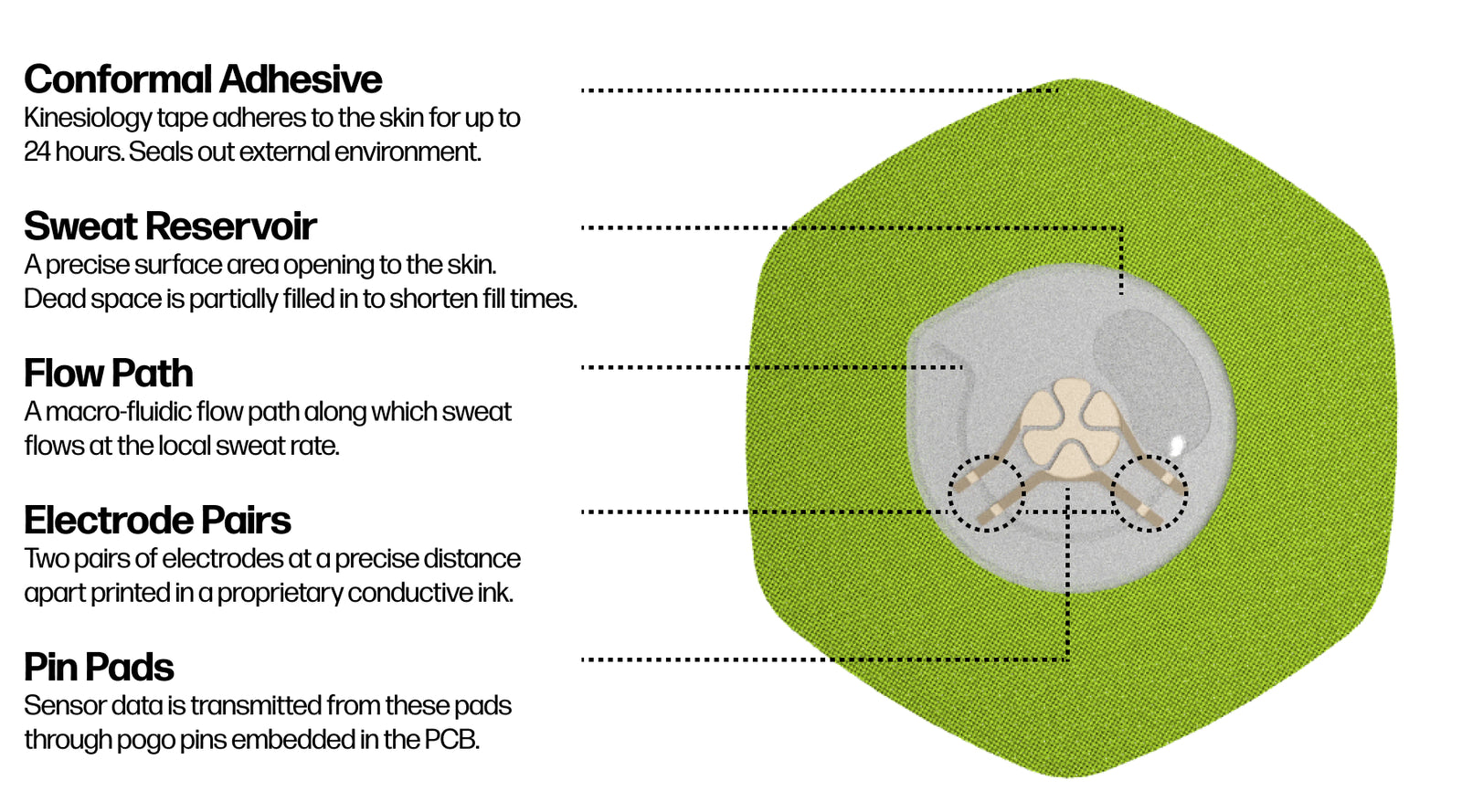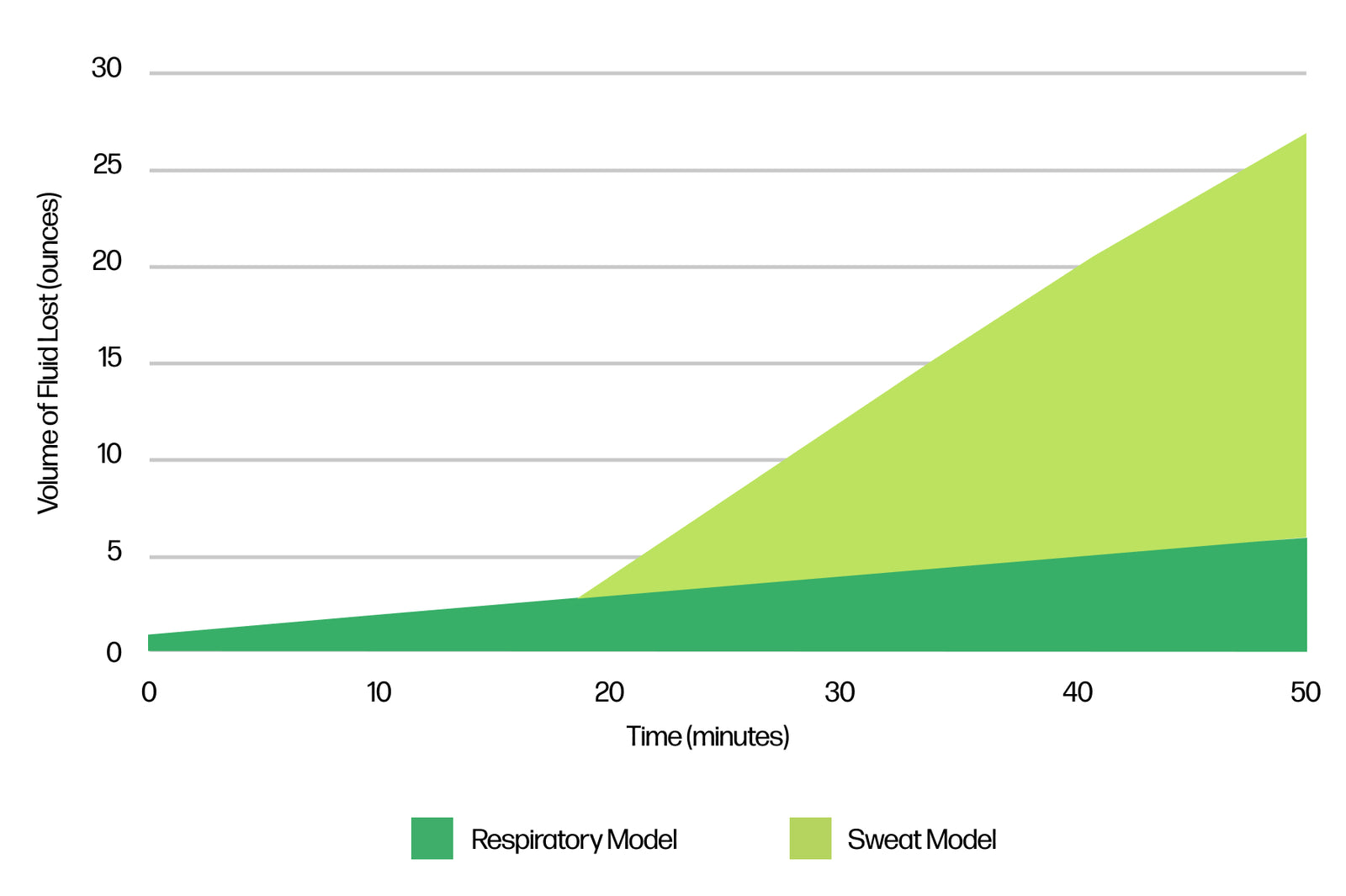written by Brad Wright and Olivia Crozier
The average endurance athlete loses 2-3 pounds per hour during a workout. While sweat is the dominant contributor, there are multiple other sources of body mass loss during a workout that are widely variable from one athlete to the next, including water vapor lost through respiration.
In order to accurately report an athlete’s fluid loss during a workout, Nix’s algorithms include both sweat and respiratory losses in total fluid loss calculations.
Sweat Losses
Sweat is where the majority of total fluid loss comes from. When looking at the back of the Sweat Patch, the time it takes for sweat to travel from the first set of electrodes to the second set is leveraged to calculate a user’s local sweat rate (for example on the bicep). The local sweat rate is then extrapolated to the whole body fluid loss using peer-reviewed and published methods.

Respiratory Losses
While the majority of an athlete’s fluid loss comes from sweat, respiratory water losses can also account for a significant percentage of total fluid loss. Athletes lose fluids via water vapor each time they exhale and can lose upwards of 11 ounces of fluid per hour depending on their respiratory rate. In this way, intensity of the workout is a main driver of the rate of respiratory water loss. This is most obvious in winter when we can see the steam. This same phenomenon occurs in all types of weather conditions, but the condensation is typically not visible unless the temperature is below approximately 45°F / 7°C.
Nix’s respiratory loss algorithm model takes into account a user’s exhaled water vapor during a workout. The more intense the workout, and the higher the respiratory rate, the greater the potential respiratory water losses. The Nix app calculates respiratory losses by leveraging workout duration and intensity. As such, we ask for average pace during both running and cycling workouts to support these calculations. While we know pace will vary workout to workout, training at ±5% of the pace provided will not materially impact the model or your data. With these metrics we can then calculate an athlete’s total exhaled vapor over the course of a workout.
Nix reports these sweat and respiratory losses combined as total fluid losses. While respiratory losses begin the moment your workout begins, sweating often isn’t triggered until upwards of 20 minutes into a workout.

This chart shows an example of how the two models are stacked on top of one another to calculate total fluid loss during a workout.





